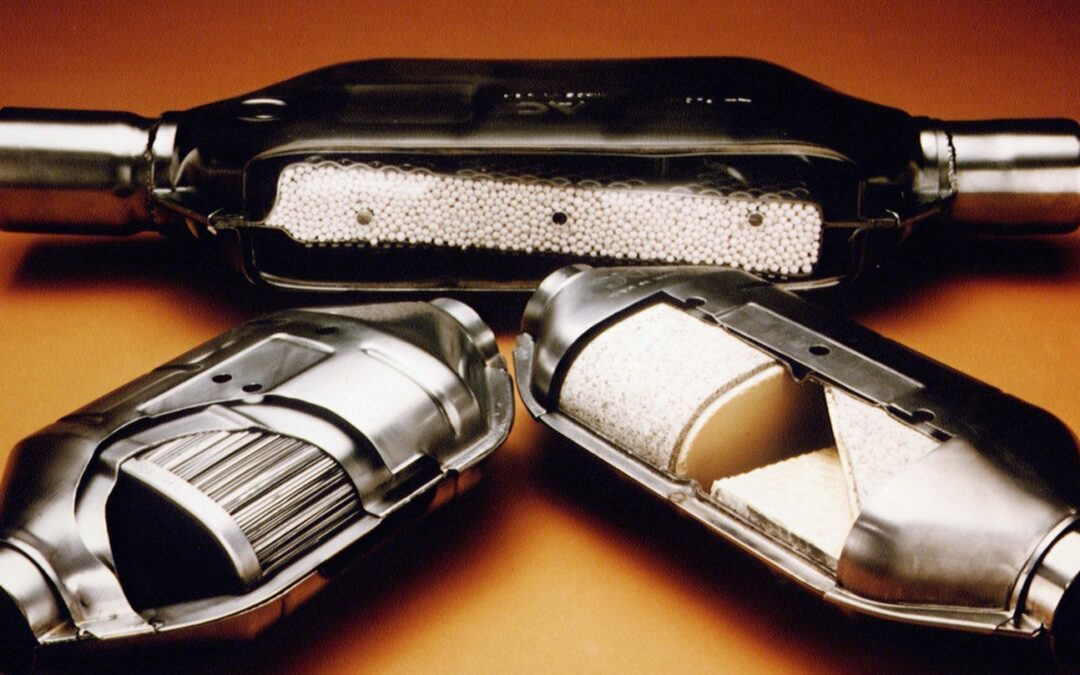GREEN BEAN GUIDE
Why Are People Stealing Catalytic Converters?!
It’s not what a catalytic converter does that makes it a target for theft; it’s what’s inside. Think of a catalytic converter as a very special kind of filter for your car`s exhaust system. It turns out these catalytic converters hold precious metals that convert harmful emissions into less harmful gasses.
And they’re more valuable than gold! These precious metals include platinum, rhodium, and palladium. As of May 2021, rhodium was valued at $27,900 per ounce, palladium at $2,896 per ounce, and platinum at $1,227 per ounce. And with anything precious in this world, thieves are coming after it. Because of their emissions classification, and the frequent engine starts that are needed, catalytic converters for hybrid vehicles have higher amounts of these precious metals. Hybrid vehicles are the most vulnerable and easy to identify. Occasionally, thieves may also target trucks and SUVs because of the higher ground clearance they yield. It’s also worth pointing out that all-electric vehicles (EVs) are the only ones safe from thieves because they produce no emissions, thus do not have a need for a catalytic converter. These thefts are fast and simple – the thief slides under the car and removes two or three bolts, or may even opt to cut it out with a reciprocating saw. The sawing can be noisy, but in just a couple of minutes, it’s over and the part just falls out. You’d be surprised at the number of thefts that occur during the day and in plain sight!
According to the National Insurance Crime Bureau (NICB), catalytic converter thefts have risen from about 100 per month in 2018 to more than 1,200 per month in 2020. Prius theft claims are at their highest in California, Oregon, and Washington, with overall claim frequencies up dramatically from 2019 to 2020. NICB also reports the average number of monthly thefts jumped from 282 in 2019 to 1,203 in 2020. In December 2020 alone 2,347 catalytic converter thefts were reported to U.S. auto insurers. The Highway Loss Data Institute (HLDI) shows scrap prices reaching $1,022 for the 2004-2009 Prius, while the third-generation 2010-2015 Prius catalytic converter commands only $548. Typically, recyclers may pay $50 to $250 for a catalytic converter, but we’ve seen recyclers pay up to $800 for a catalytic converter from a hybrid vehicle. And for comparison`s sake, a 2007 F-150 FX-4 catalytic converter costs just $143. Even when owners have comprehensive insurance, those who have their catalytic converter stolen will still need to pay a premium toward the more than $3,000 price tag for a replacement catalytic converter. The cost to replace a catalytic converter truly reflects the value of its components. We reached out to a shop, and we received a quote of $2,000 – $2,500 to replace the catalytic converter of our 2008 Toyota Prius – this includes labor. Crazy!
So, how can you protect your catalytic converter? Well, here are three ways to help protect you against catalytic converter theft:
-
- Etch your license plate number onto your catalytic converter.
- This makes the part identifiable to law enforcement. The idea is that a thief who sees the etching moves on to an easier target. Police in some communities has joined with local repair shops to sponsor etching events.
- Park in well-lit areas.
- Most thefts occur in residential lots where cars are parked overnight. If you have to leave your car outside, NICB recommends parking in a well-lit area and make sure to set your vehicle alarm. Installing a bright motion sensor light may also dissuade potential thieves.
- Install an anti-theft device.
- Etching and careful parking might make your catalytic converter less attractive to thieves, but these preventive maneuvers don’t protect the part itself. It just helps identify them. An anti-theft device can help – which costs about $350, including installation. Or you can buy one online for about $150 and install it yourself. Installation simply involves drilling holes in the frame and attaching the device with bolts and fasteners.
- Etch your license plate number onto your catalytic converter.
Gone in 90 seconds!
